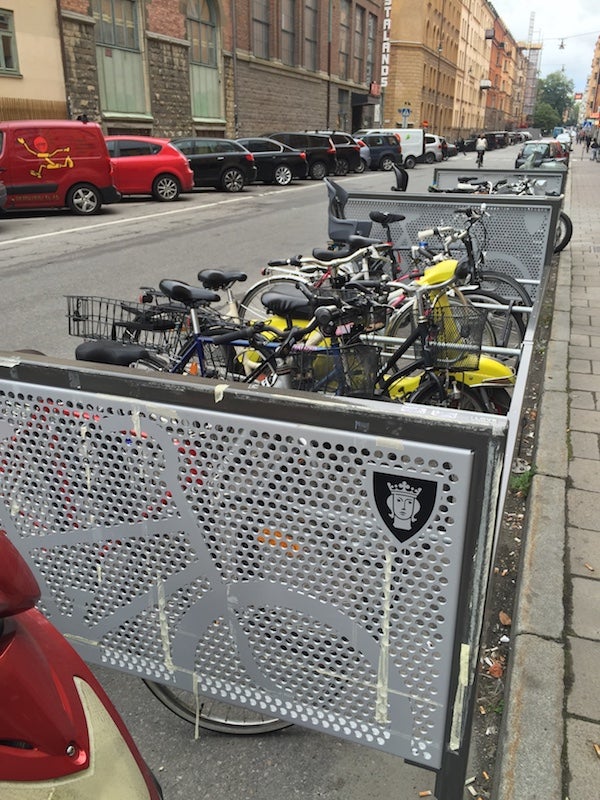This article was published in Scientific American’s former blog network and reflects the views of the author, not necessarily those of Scientific American
While Stockholm, Sweden, might be considered a modern and well-connected city with bike lanes and metro lines, bicycling itself was only taken up in a big way in the last decade. The city (disclaimer: my hometown) only took up bike-sharing in 2007, a year after the Velib’ system in Paris, but with far less ridership. In fact, Sweden’s third largest city, Malmö, outranks Stockholm by far in global “bike-friendly” rankings, and even outranks Paris.
Change is coming however, as Stockholm has undertaken an ambitious strategy to go fossil-fuel free by 2040. But even with big changes in which fuels are being used, the city realized it needs to shift further to zero carbon modes of mobility. Enter bicycles.

Serious-looking bike parking in Stockholm, Sweden. Credit: TALI TRIGG
On supporting science journalism
If you're enjoying this article, consider supporting our award-winning journalism by subscribing. By purchasing a subscription you are helping to ensure the future of impactful stories about the discoveries and ideas shaping our world today.
Its southern neighbor Denmark is world-famed for its enthusiasm of two-wheelers, so it was welcome news when in 2015 Stockholm announced minimum bike parking quotas for new buildings. Yes, you read that right. For every apartment built in Stockholm, a minimum of 2.5-4 (it was 1.5 at first) bike parking spaces have to be built. This is a stark contrast to minimum (car) parking requirements in Los Angeles and throughout the United States. In Houston, Texas, as an example, even building an efficiency apartment requires 1.25 parking spaces to be built.
Stockholm is adding more bike lanes, has redefined the term “parking requirements,” and now it seems even the bike parking design is educational (see first image above). The message is two-fold: for every car parking space, you can fit around 6-20 bikes (depending on design), but more importantly, the battle for urban space has only just begun.